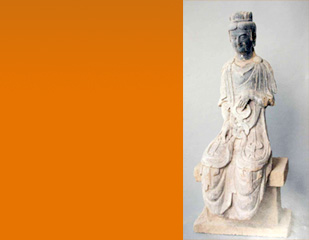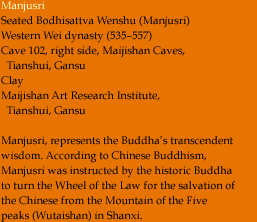 |
|
 |

It is as if one were to mount a carriage and pierce the mountain, carving out great niches, bestriding the peak, an infinite medley of stars overhead and all the land spinning around far below. — Dedication of Cave 4, Maijishan, by the poet Yu Xin (513–581) The practice of excavating clusters of rooms or niches into the sides of cliffs and mountains to create cave temples originated in India and spread with Buddhism via Central Asia to China. Within China, Gansu is home to more Buddhist caves than any other region of China�a testimony to its importance in the history of early Chinese Buddhism. Buddhist cave sites were often chosen for their scenic beauty, sometimes by passing monks who had seen Buddhist visions at a particular spot or were entranced by the spiritual aura of the sites. Cave temples were the focus of worship and meditation, not only for the communities of monks who resided there, but also for visiting pilgrims and traders. Indeed, cave temples were often located along the trade routes and were used by merchants as banks or warehouses. Buddhist images were arranged in the caves according to a strict iconographic program. At some sites the images were carved directly from the rock within the cave, but at many Buddhist cave sites in Gansu, the stone of the cliffs is too friable for carving. Instead, most images in the caves were crafted from mixture of clay and straw built up around armatures of wood or metal. A finishing layer of fine clay was applied in which the details were modeled. Both images and walls were brilliantly painted, but in many cases, the pigments have not survived. |
||||